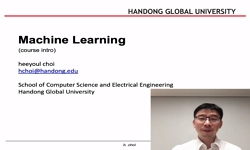본 연구는 모르타르의 초기동해 진단을 위한 고주파 초음파 및 머신러닝 기반의 다단계 회귀 모델의 적용 가능성을 평가 하였다. 1단계에서는 초음파 속도와 재령으로 압축강도를 예측하고,...
http://chineseinput.net/에서 pinyin(병음)방식으로 중국어를 변환할 수 있습니다.
변환된 중국어를 복사하여 사용하시면 됩니다.
- 中文 을 입력하시려면 zhongwen을 입력하시고 space를누르시면됩니다.
- 北京 을 입력하시려면 beijing을 입력하시고 space를 누르시면 됩니다.

초음파 속도를 활용한 모르타르의 초기동해 예측 모델 제안 및 적용성 검토 = Machine Learning-Based Prediction of Early Frost Damage in Mortar Using Ultrasonic Pulse Velocity: A Multi-Stage Regression Approach
한글로보기https://www.riss.kr/link?id=A109752200
- 저자
- 발행기관
- 학술지명
- 권호사항
-
발행연도
2025
-
작성언어
Korean
- 주제어
-
등재정보
KCI등재
-
자료형태
학술저널
-
수록면
249-260(12쪽)
- DOI식별코드
- 제공처
-
0
상세조회 -
0
다운로드
부가정보
국문 초록 (Abstract)
본 연구는 모르타르의 초기동해 진단을 위한 고주파 초음파 및 머신러닝 기반의 다단계 회귀 모델의 적용 가능성을 평가 하였다. 1단계에서는 초음파 속도와 재령으로 압축강도를 예측하고, 2단계에서는 예측된 압축강도를 활용하여 초기동해 깊 이를 예측하였다. 총 4가지 회귀 알고리즘을 적용한 결과, 모든 분석 결과에서 250kHz와 그래디언트 부스팅 모델의 조합이 가장 우수한 예측 성능을 보였다. 이는 고주파 초음파와 비선형 회귀 모델의 조합이 초기동해로 인한 미세 손상을 평가하는 데 효과적이고, 향후 콘크리트 구조물에 대한 적용 가능성과 현장 진단 기술로의 확장을 위한 기초자료로 활용될 수 있을 것으로 판단된다.
다국어 초록 (Multilingual Abstract)
This study evaluated the applicability of a multi-stage regression model based on high-frequency ultrasonic testing and machine learning for diagnosing early frost damage in mortar. In the first stage, compressive strength was predicted using ultrason...
This study evaluated the applicability of a multi-stage regression model based on high-frequency ultrasonic testing and machine learning for diagnosing early frost damage in mortar. In the first stage, compressive strength was predicted using ultrasonic pulse velocity and curing age; in the second stage, the predicted compressive strength was used to estimate the depth of early frost damage. Among the four regression algorithms applied, the combination of the 250 kHz ultrasonic data and the gradient boosting model consistently showed the highest prediction accuracy. These findings suggest that the integration of high-frequency ultrasonic signals with nonlinear regression models is effective in assessing microstructural damage caused by early frost, and can serve as a foundation for future applications in concrete structures and the development of on-site diagnostic technologies.
동일학술지(권/호) 다른 논문
-
STS 슬래그 활용을 위해 증기양생한 무시멘트 모르타르의 물리적 특성 검토
- 한국건축시공학회
- 윤자연
- 2025
- KCI등재
-
아크릴계 시멘트 혼화용 폴리머를 혼입한 비소성 시멘트 모르타르의 강도 및 내구 특성
- 한국건축시공학회
- 장영국
- 2025
- KCI등재
-
하수처리시설 RC구조물용 열경화성수지 시트 라이닝재의 성능 평가
- 한국건축시공학회
- 김완기
- 2025
- KCI등재
-
- 한국건축시공학회
- 임남기
- 2025
- KCI등재




 ScienceON
ScienceON KISS
KISS






